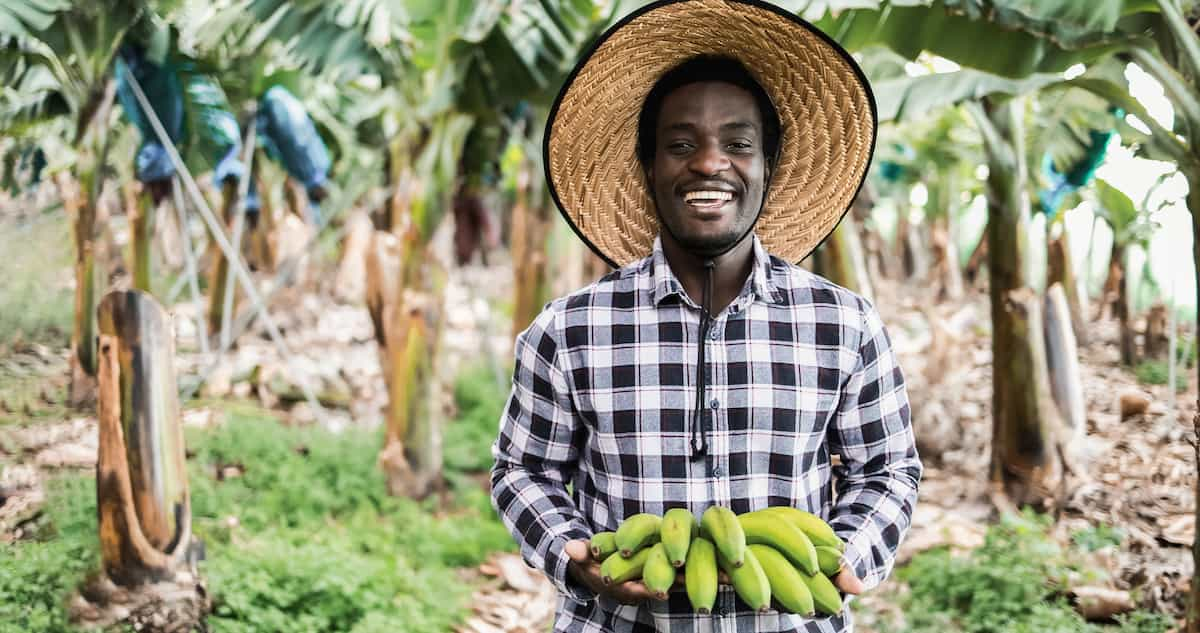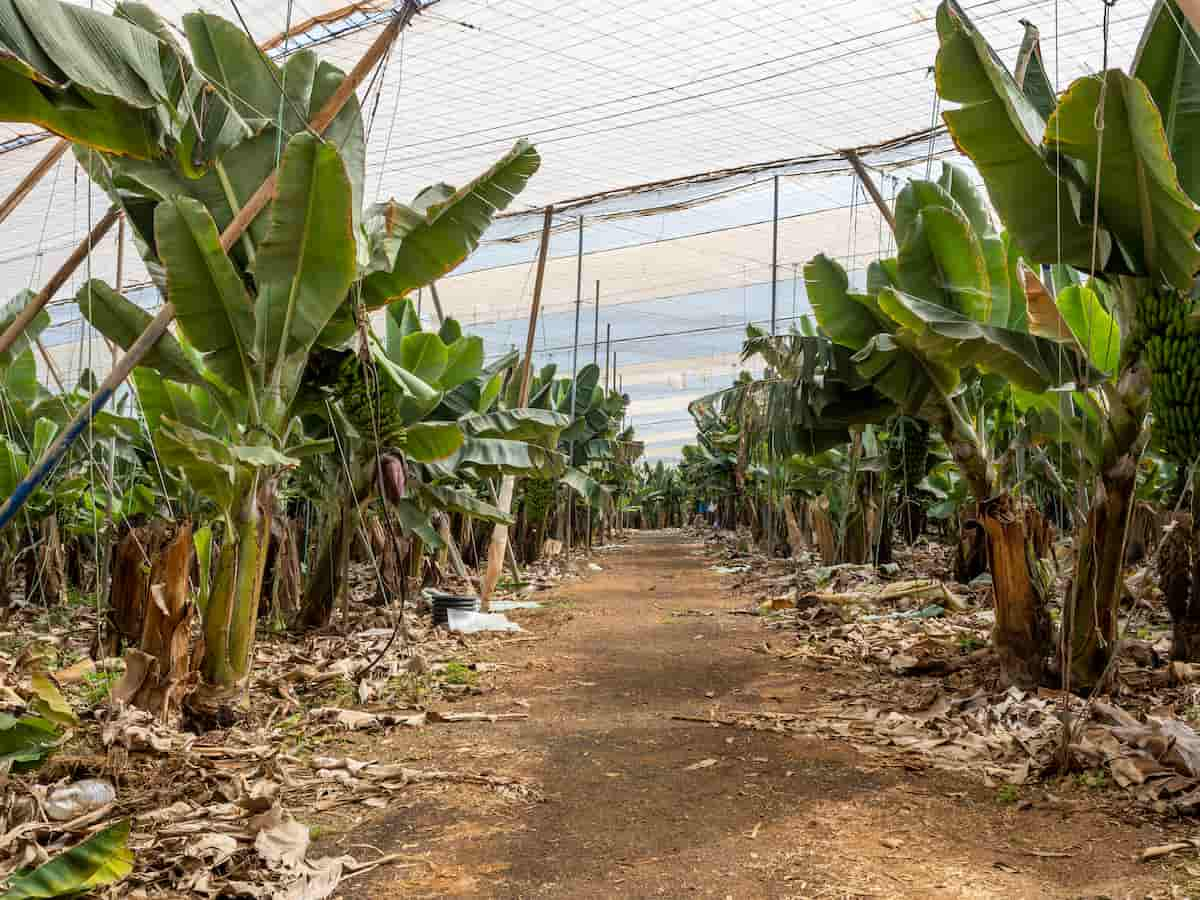Bananas are tropical fruits consumed all over the world. Warm, humid climates are ideal for growing them. It takes nine months for banana plants to reach maturity and produce fruit, so if you want to reap the benefits of growing a banana tree, you need to be patient. Healthy banana plants thrive in greenhouse conditions. Growing dwarf banana plants in greenhouses can maximize your efforts since space is often limited. Growing bananas closer and protecting against these pathogens in northern climates would be possible by producing them in greenhouses.

How to Grow Bananas in a Greenhouse
Banana Varieties Suitable for Growing in Greenhouse
The size of mature banana plants is one of the main concerns of greenhouse banana production. With a height of over 5-6 meters and a spread of 2.5 meters, Cavendish is a tall variety. The greenhouse banana industry would do better if it focused on growing dwarf varieties like Dwarf Cavendish, Grande Naine, Lady Finger, Orito, Williams, Poyo, Dwarf Red, or Dwarf Apple, all of which are between 2 and 3 meters tall. Dwarf Cavendish and Grande Naine are the most commonly grown greenhouse crops.
Soil Requirements for Growing Banana Trees in A Greenhouse
Banana cultivation requires deep, rich loamy soil with a pH between 6.5 and 7.5. The soil should have good drainage, fertility, and sufficient moisture to grow bananas. It is not recommended to grow bananas on saline-solid, calcareous soils. To grow bananas, the soil must be neither acidic nor alkaline, rich in organic matter, with a high nitrogen content, an adequate phosphorus level, and plenty of potassium.
Lighting Requirements for Growing Banana Trees in A Greenhouse
Although banana plants look almost plastic because of their large leaves, they are tropical plants that require full sun and water to grow. Choose a greenhouse location where your banana tree plant will receive direct sunlight. It is recommended that banana leaf plants receive 6-8 hours of exposure to sunlight per day to thrive. Some species, however, have fragile leaves that prefer indirect sunlight or shade.
Temperature and Humidity Requirements for Growing Banana Trees in A Greenhouse
The greenhouse conditions should be monitored. The humidity level should be at a minimum of 50% and as constant as possible. There should be a significant amount of humidity in the greenhouse. Daytime temperatures should be between 26 and 30°C, and nighttime temperatures should not be below 20°C.

Generally, acceptable temperatures are warm, rarely reaching below 14 degrees Celsius or above 34 degrees Celsius. During the year, bananas can take up to a year to produce fruit, so you should know what temperatures they will experience. Your banana plants will stop growing if the temperature falls below 14°C.
How to Grow Banana Trees from Sucker in Greenhouse
- Sword suckers should be examined on the banana plant’s main stem. A sword sucker has a thick root system and small, sharply pointed leaves. Large leaves but weak roots characterize water suckers.
- Carefully lift up the banana tree pup. Make sure the roots are not damaged. The plant will focus on root growth if all or most leaves are removed.
- The planting site or container for the sucker should be prepared. Dig a hole 2 feet deep and 3 feet wide if you are planting in the ground. Compost should be mixed into the soil at a depth of one to two inches.
- The root ball of the sucker should be at least several inches wider and deeper than the container in which it will grow. The potting mix should be filled halfway into the container.
- The sucker can be planted in the ground or a container. Add soil to the hole or container until it reaches the top.
- The banana sucker should be watered deeply after planting and twice or three times per week after that. Until they recover, transplanted suckers will wilt.
- The soil around the sucker should be mulched with a three to six inches thick layer.
- When planting, apply 1/2 cup of balanced fertilizer per sucker. Give the plant 2 cups of a balanced fertilizer during the first year in midwinter, spring, and late summer.
Water Requirements for Growing Bananas in A Greenhouse
It’s time to water if the top 1 inch of soil is dry. Water banana plants deeply and slowly every two to three days when the climate is warm and more frequently during droughts. As bananas stop growing when temperatures reach the 50s, they won’t require as much water during cooler months. Water bananas, on average, every four to six inches or approximately one to one and a half inches per week, depending on the season. Root rot can, however, be caused by overwatering. Water should not stand in the soil, and it should drain well.
Fertilizer Requirements for Growing Bananas in A Greenhouse
Fertilizing regularly is essential if you want to grow and harvest fruits successfully. This is especially true for banana trees, and plants considered heavy feeders. In spring and summer, banana trees should be fertilized once a month. Switch to a lower nitrogen fertilizer just before flowering to maximize fruit production. Fertilize the tree around the trunk, avoiding the trunk to avoid damaging the extensive root system.
Common Pests & Plant Diseases in Bananas and Their Control
- A well-drained soil can prevent crown rot from spreading to the stalk.
- The Fusarium fungal disease Panama wilt can cause the yellowing of lower leaves. Fungicides should be applied to plants. Infected plants often die from Panama wilt.
- Leaf spots caused by bacteria can cause yellow patches on leaves; these spots can eventually darken and kill the leaf. The soil should be well-drained; diseased foliage should be removed.
- Anthracnose is a fungus that can damage leaves and fruit, turning them black; spray with fungicide; ensure the soil is well-drained.
- Look for clusters of aphids on stems and under leaves; spray with insecticidal soap or strong water to knock them off. Aphids and mites feed on banana sap.
- Spinosad may be applied to infected leaves and stems to prevent banana weevils from tunnelling into the plant roots and stems.
Harvesting Banana
The best time to harvest mature bananas is when they are still green rather than yellow. Fruit fingers become fatter but remain green as they mature. The fruit is ready to be harvested about 4-6 weeks after the fingers stop growing. Bananas are ready to pick when they are well-rounded between the ribs and their little flowers are dry and easily rubbed off. When cutting bananas, it is best to remove the entire stalk. If you want bananas to ripen faster, hang them in a shady location. From green to yellow, they usually ripen from top to bottom.
In case you missed it: How to Grow Papaya in a Greenhouse: A Step-By-Step Guide for Seed to Harvest

Conclusion
In their native habitats, bananas thrive under similar conditions as most other plants. A greenhouse is probably the best place if you want to grow banana plants in a comfortable living environment with bright light. The only thing you are required to do is choose the right banana and plant it in the right place, and provide a modest amount of care and feeding to it.
- Feed Your Flock for Less: Top 10 Tips to Save on Chicken Feed
- Ultimate Guide to Ossabaw Island Hog: Breeding, Raising, Diet, and Care
- Hatching Answers: The Top 10 Reasons Your Chickens Aren’t Laying Eggs
- Eggs and Economics: Breaking Down the Cost of Raising Backyard Chickens
- Defend Your Greens: Proven Methods to Keep Iguanas Out of Your Garden
- Ultimate Guide to Cinnamon Queen Chicken: A Comprehensive Guide for Beginners
- Ultimate Guide to California Tan Chicken: Breeding, Raising, Diet, Egg-Production and Care
- Ultimate Guide to Marsh Daisy Chicken: Breeding, Raising, Diet, and Care
- 10 Types of Chicken Farming Businesses You Can Start for Profits